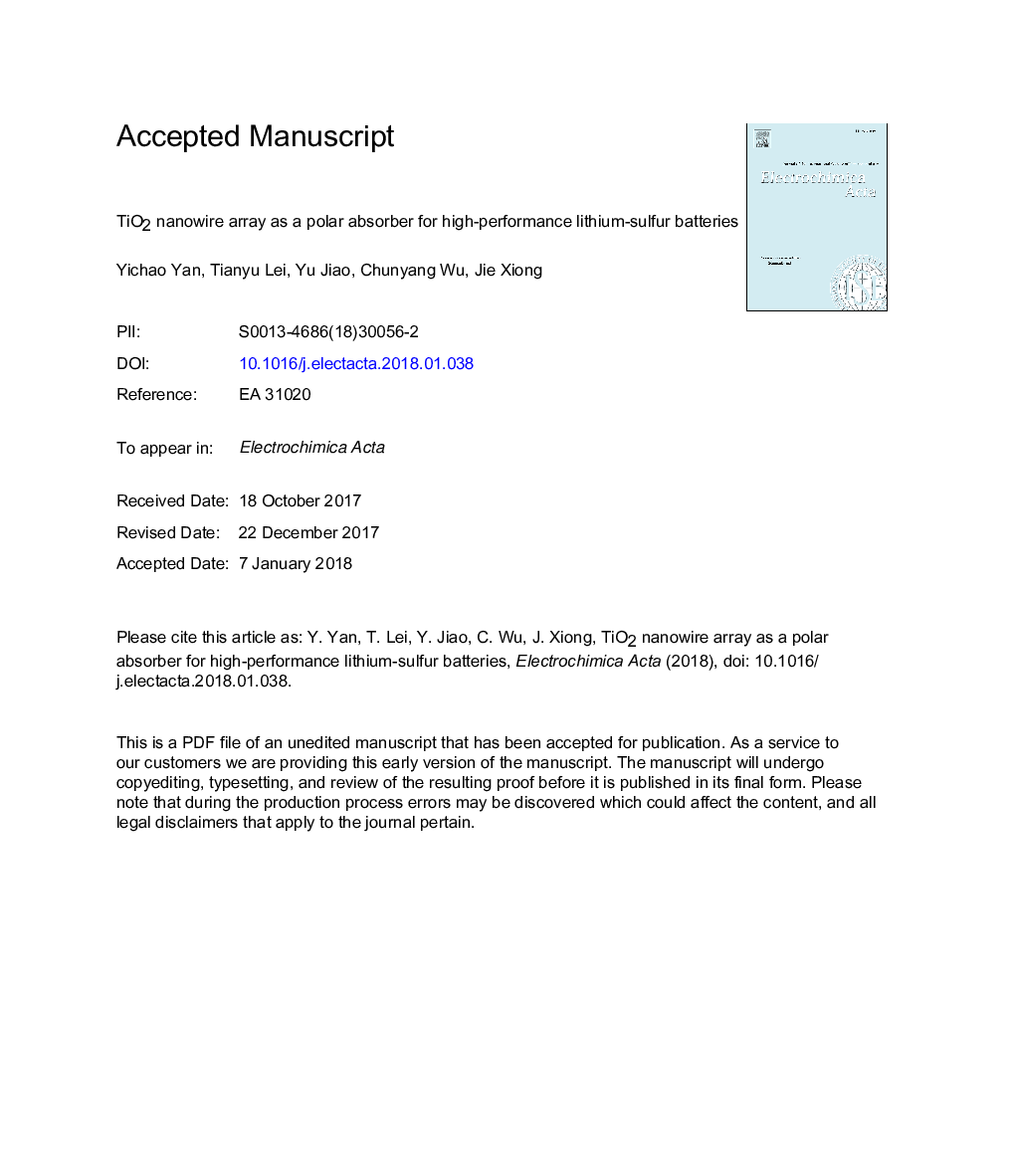| Article ID | Journal | Published Year | Pages | File Type |
|---|---|---|---|---|
| 6604233 | Electrochimica Acta | 2018 | 22 Pages |
Abstract
The rechargeable lithium-sulfur battery is recognized as a next-generation lithium-ion battery due to its exceptionally high energy density and low cost. Unfortunately, the high dissolution of polysulfides and the low conductivity of sulfur and lithium sulfide lead to a fast capacity decay and a poor specific capacity of the sulfur cathode, which impedes the further development of lithium-sulfur batteries. To overcome these issues, we propose a 3D binder-free collector via in situ-grown polar TiO2 nanowires on carbon-nanofibers, which can successfully suppress the “shuttle effect” of polysulfides and improve the electron conductivity of the sulfur cathode. The prepared TiO2-nanowires arrays provide a large surface area for sulfur loading and a convenient path for electron transfer. These characteristics result in a high ion diffusion capacity of up to 699â¯mAâ¯hâ¯gâ1 with an excellent coulombic efficiency, higher than 98.5% after 300 cycles at 1.0â¯C, and a capacity decay as low as 0.075% per cycle. In addition, the strong chemical binding interaction between the polysulfides and TiO2 was directly observed by in situ UV/Vis spectroscopy.
Keywords
Related Topics
Physical Sciences and Engineering
Chemical Engineering
Chemical Engineering (General)
Authors
Yichao Yan, Tianyu Lei, Yu Jiao, Chunyang Wu, Jie Xiong,
